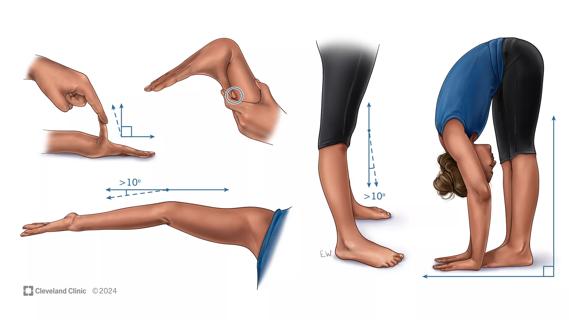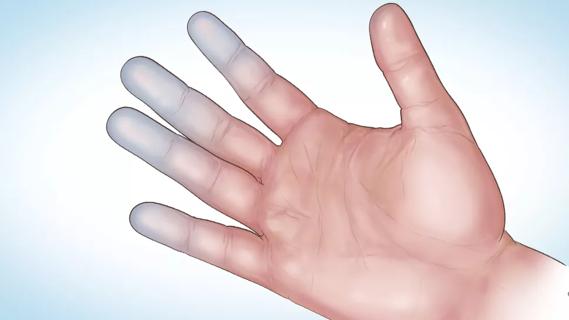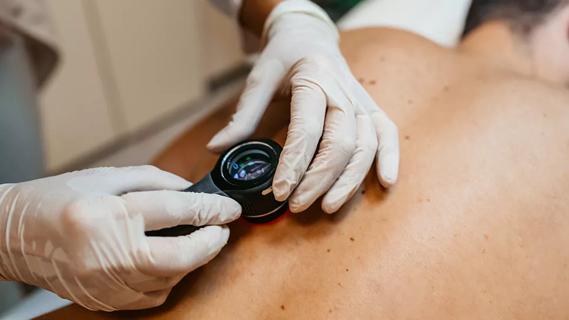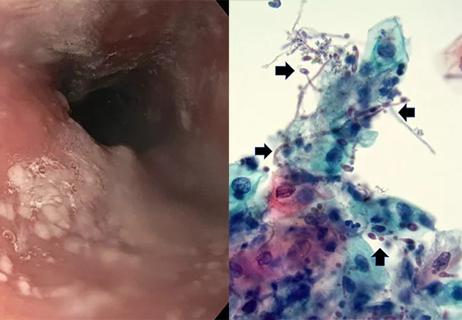Scleromyxedema may cause extracutaneous symptoms

By Soumya Chatterjee, MD, and Anthony P. Fernandez, MD, PhD
Advertisement
Cleveland Clinic is a non-profit academic medical center. Advertising on our site helps support our mission. We do not endorse non-Cleveland Clinic products or services. Policy
A 53-year-old man presented to the rheumatology clinic with a three-year history of an itchy rash, Raynaud’s phenomenon, dysphagia and a burning sensation in his hands.
Physical examination was notable for firm, greasy papules across his forehead that led to the formation of glabellar grooves (A).

There were waxy papules on his hands with associated skin thickening and finger flexion contractures (B., above). Similar skin changes were seen on his nose, lips, ears, trunk and feet. There was no telangiectasia or calcinosis.
Sensory neuropathy was present in his hands, arms and face. Tests of thyroid function were normal. Serum protein electrophoresis with immunofixation identified an IgG-λ monoclonal gammopathy, and a bone marrow biopsy was normal.
A subsequent skin-biopsy sample obtained from the right side of the neck showed dermal spindle-cell proliferation, thickened collagen fibers, fibrosis and perivascular inflammation (C, hematoxylin and eosin stain), as well as increased dermal mucin deposition (D, colloidal iron stain). A diagnosis of scleromyxedema was made.


Scleromyxedema is a primary cutaneous mucinosis typically associated with a paraproteinemia. This type of sclerosing skin disorder may cause extracutaneous symptoms, as was seen in this patient.
Although infusions of intravenous immune globulin provided minimal relief initially, treatment with lenalidomide resulted in abatement of symptoms and reduction in paraproteinemia after four months.
This article was originally published in The New England Journal of Medicine, Nov. 23, 2023.
Advertisement
Advertisement

Treatment insights from the ninth recorded EMPD case in 50 years

Experienced clinicians can bridge traditional care gap

Treatment strategies require understanding of pathomechanisms

CAR T-cell therapy may offer reason for optimism that those with SLE can experience improvement in quality of life.

Nasal bridge inflammation, ear swelling and neck stiffness narrow the differential diagnosis

Advancements lead to a new trial involving autoimmune disease

Education, prevention strategies and monitoring serves this at-risk group

Treatment for scleroderma can sometimes cause esophageal symptoms